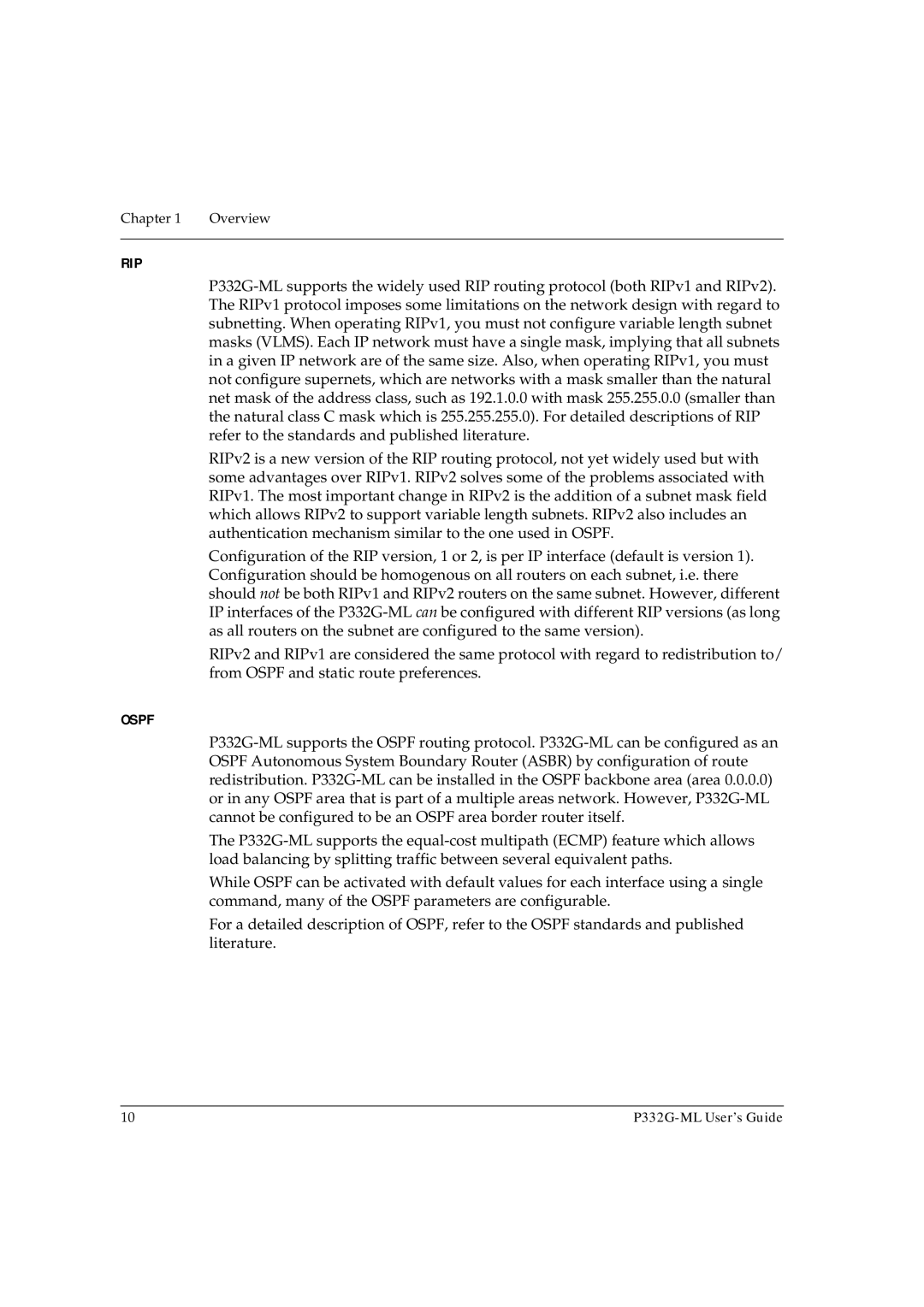Chapter 1 | Overview |
|
|
RIP
RIPv2 is a new version of the RIP routing protocol, not yet widely used but with some advantages over RIPv1. RIPv2 solves some of the problems associated with RIPv1. The most important change in RIPv2 is the addition of a subnet mask field which allows RIPv2 to support variable length subnets. RIPv2 also includes an authentication mechanism similar to the one used in OSPF.
Configuration of the RIP version, 1 or 2, is per IP interface (default is version 1). Configuration should be homogenous on all routers on each subnet, i.e. there should not be both RIPv1 and RIPv2 routers on the same subnet. However, different IP interfaces of the
RIPv2 and RIPv1 are considered the same protocol with regard to redistribution to/ from OSPF and static route preferences.
OSPF
The
While OSPF can be activated with default values for each interface using a single command, many of the OSPF parameters are configurable.
For a detailed description of OSPF, refer to the OSPF standards and published literature.
10 |
